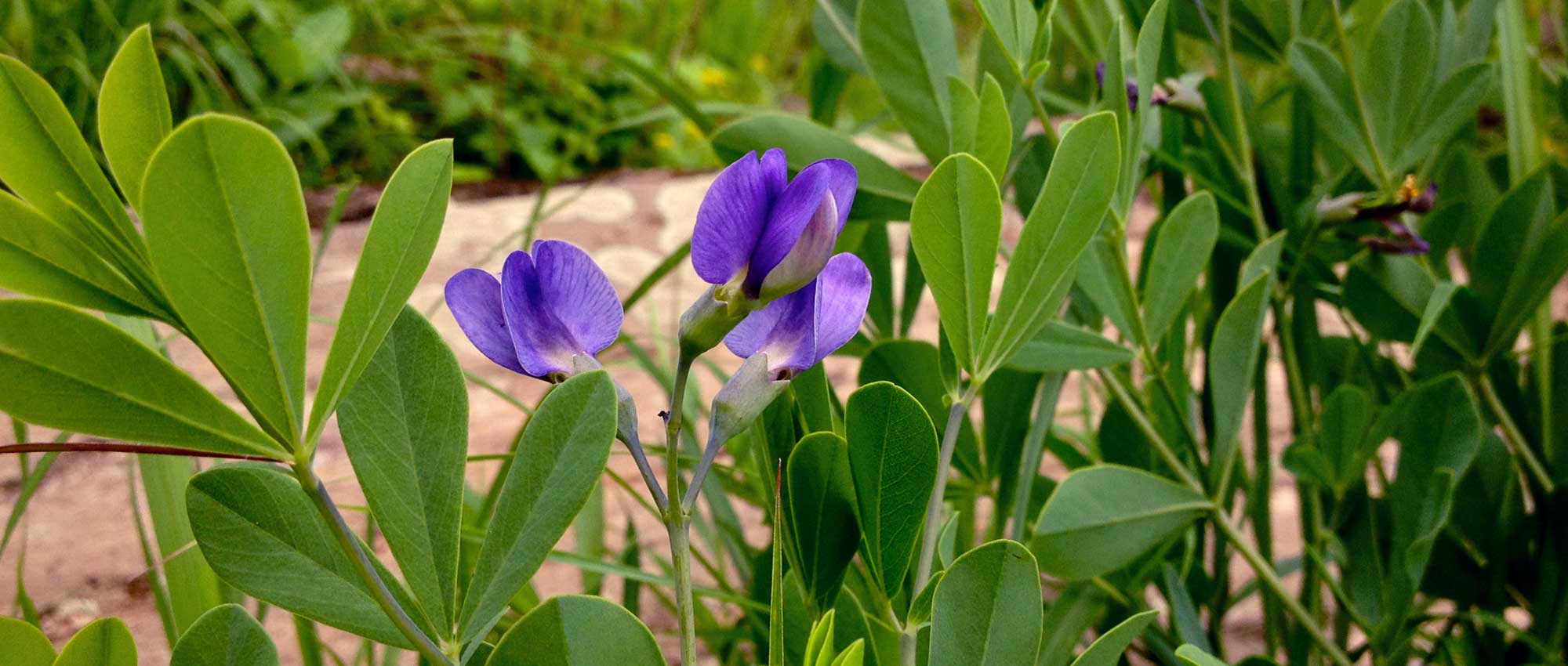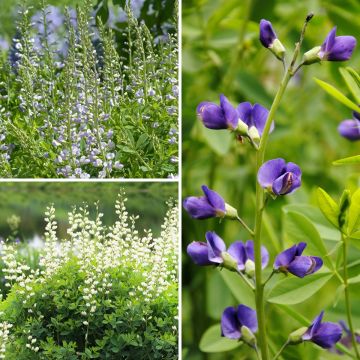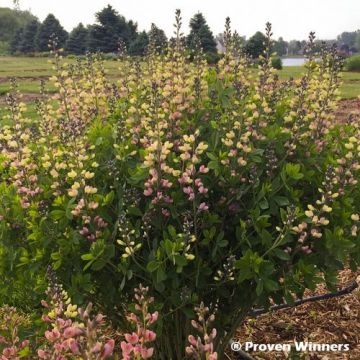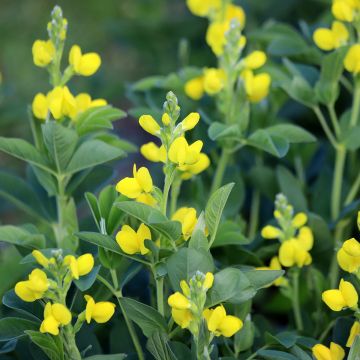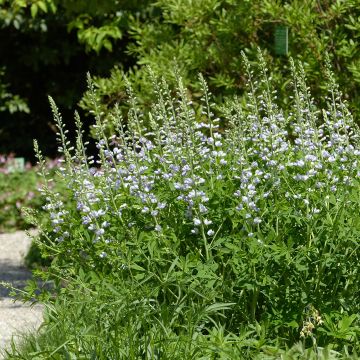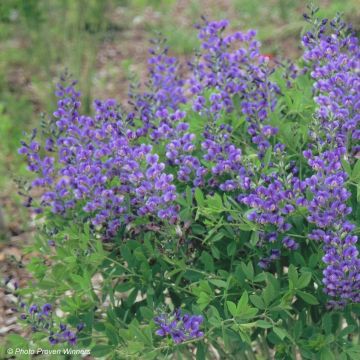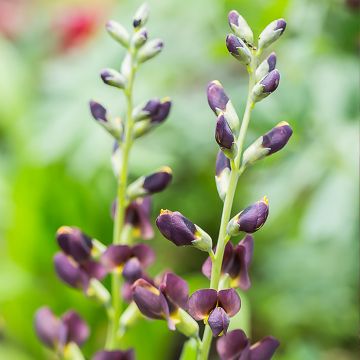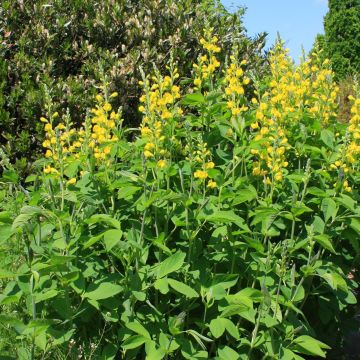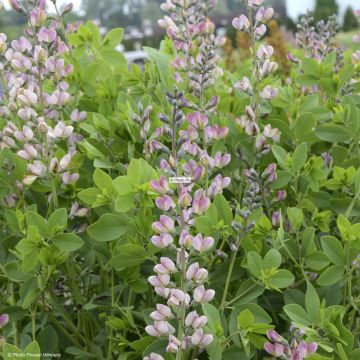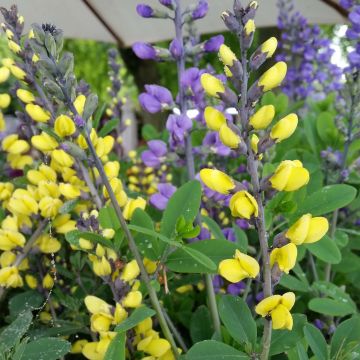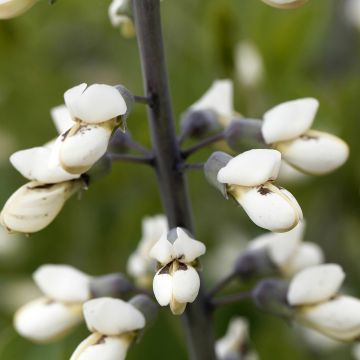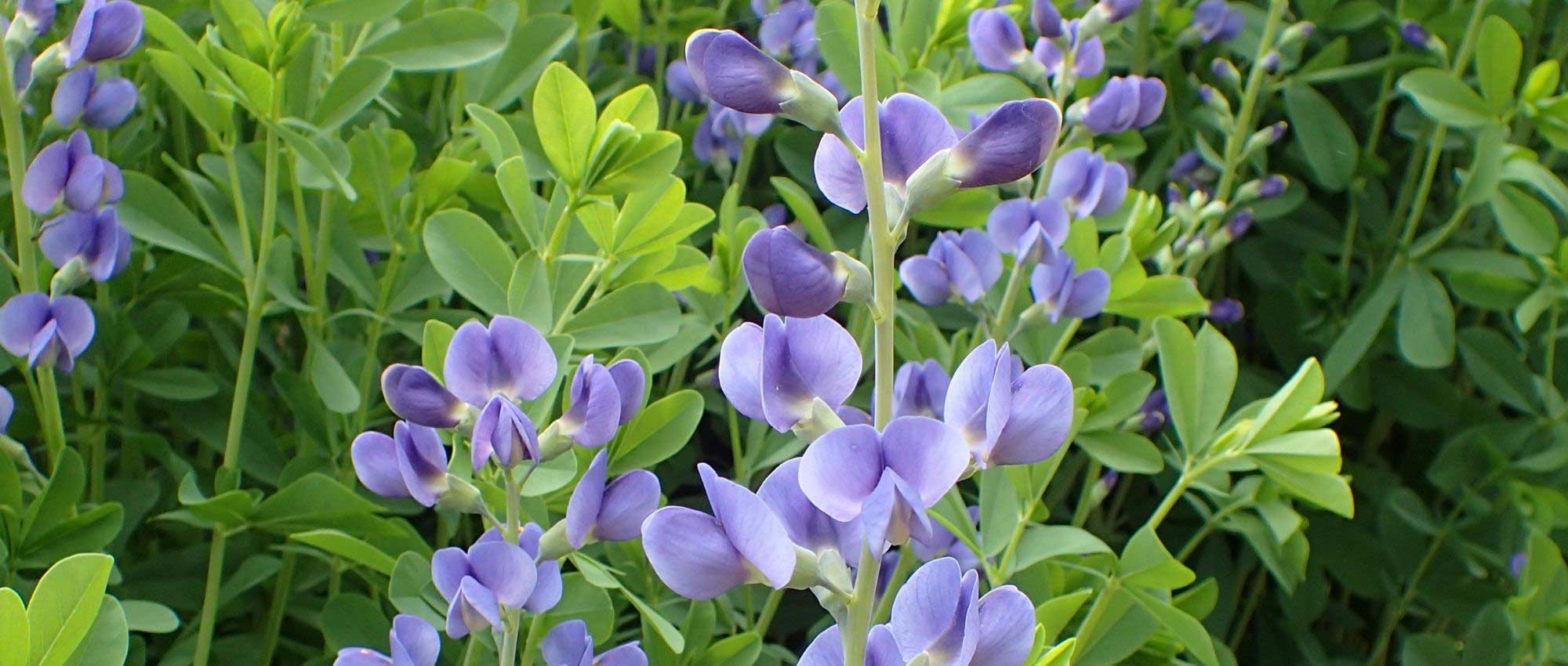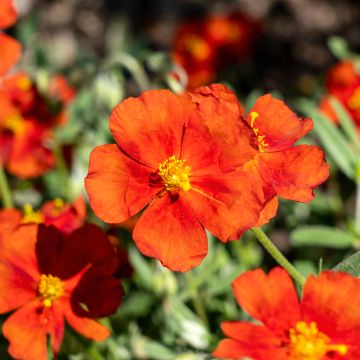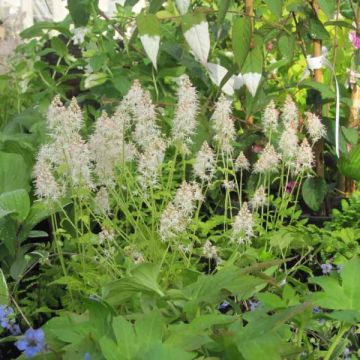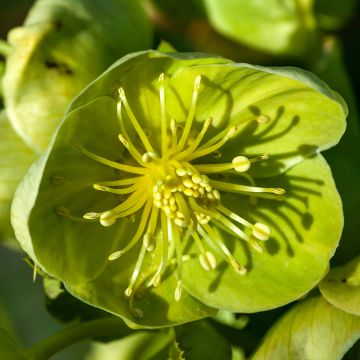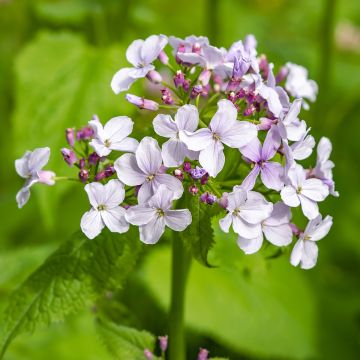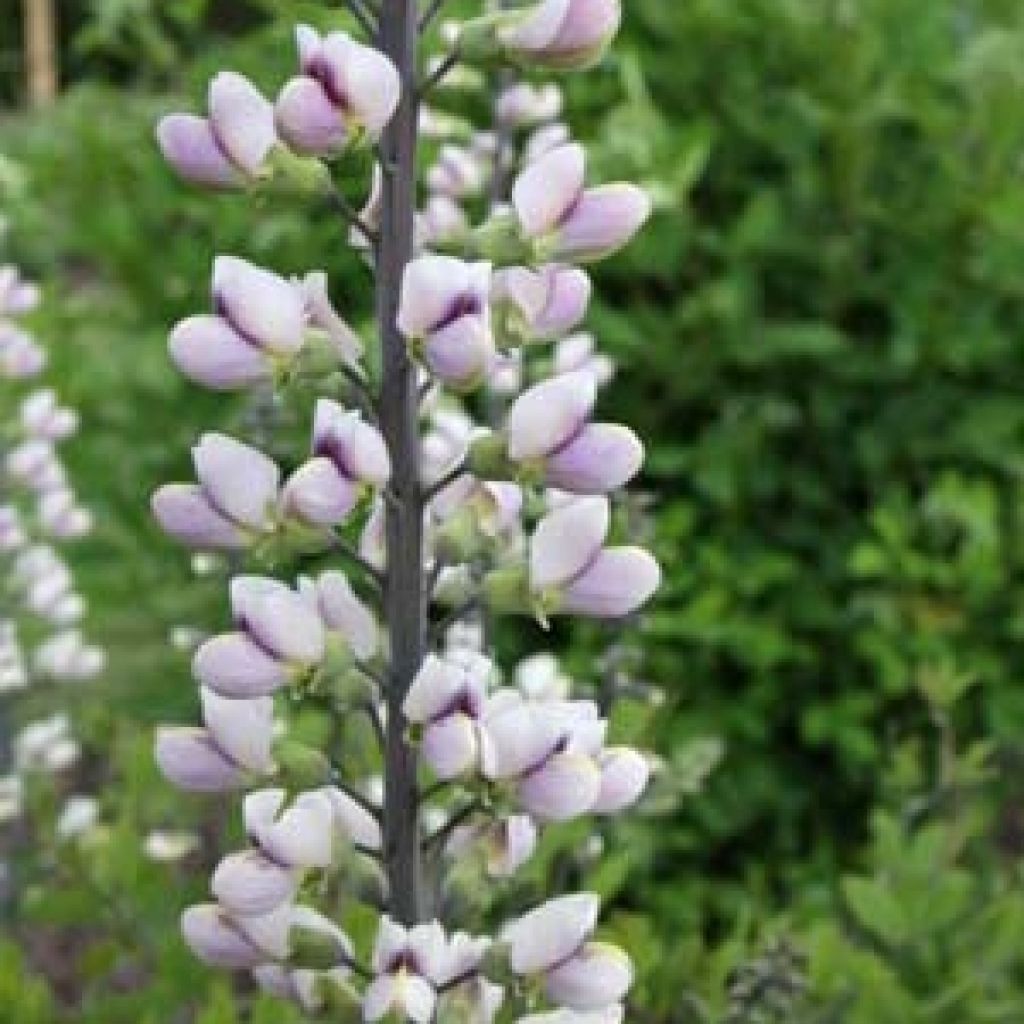

Baptisia albescens Pink Form - False Indigo
Baptisia albescens Pink Form - False Indigo
Baptisia x albescens Pink Form
False indigo
Special offer!
Receive a €20 voucher for any order over €90 (excluding delivery costs, credit notes, and plastic-free options)!
1- Add your favorite plants to your cart.
2- Once you have reached €90, confirm your order (you can even choose the delivery date!).
3- As soon as your order is shipped, you will receive an email containing your voucher code, valid for 3 months (90 days).
Your voucher is unique and can only be used once, for any order with a minimum value of €20, excluding delivery costs.
Can be combined with other current offers, non-divisible and non-refundable.
Home or relay delivery (depending on size and destination)
Schedule delivery date,
and select date in basket
This plant carries a 12 months recovery warranty
More information
We guarantee the quality of our plants for a full growing cycle, and will replace at our expense any plant that fails to recover under normal climatic and planting conditions.
Would this plant suit my garden?
Set up your Plantfit profile →
Description
Baptisia albescens Pink Form is a rare and beautiful form with coloured flowers of a botanical species called White Wild Indigo in its native North American lands. This bushy and upright plant, with a robust appearance, will charm with its particularly long flower spikes, blending mauve pink and cream, but also with its decorative pods and its presence in the garden, which is comparable to that of a small bush. Its ash-coloured stems are adorned with beautiful green-grey-blue trifoliate foliage, which is ornamental even outside of the flowering period. Both hardy, undemanding, and resistant to drought once established, this Baptisia is an excellent plant for poor soils, highly appreciated by bumblebees and bees.
Baptisia albescens is a deciduous perennial plant from the family Fabaceae, native to the eastern United States. It can be found in dry and open forests, pine forests, as well as along roadsides. This species is characterized by cylindrical pod-like fruits of coppery yellow-brown colour, and its natural resistance to mildew. Baptisias are all resistant and frugal plants that grow without much care, perfectly tolerating frost and dry summers. Their main enemy is active limestone, when it is too present in the soil. Their growth is slow, and they sometimes take time to establish themselves in the garden.
The Pink Form cultivar forms a bushy clump, sometimes wider than it is tall, reaching an average height of 90cm (35in) with a spread of 80cm (32in). Flowering begins in May-June and continues for at least 3 weeks. Above a tuft of leafy stems, spikes of 40-50cm (16-20in) appear, with the main stem being green-grey and adorned with papilionaceous flowers in rather unusual shades. The overall impression when looking at this flowering is a pastel bicolour, resulting from the blend of cream flowers and tender pink-mauve flowers. After pollination, cylindrical pod-like fruits containing seeds form, which are decorative in summer. The foliage, which disappears in winter, is also highly ornamental as it sways in the wind. It consists of green-grey-blue leaves, divided into three rounded leaflets, resembling those of alfalfa or clover. This very perennial plant is capable of living for many years in the garden, without requiring particular care once well established.
Baptisias are close relatives of lupins, which are much better known in Europe, but they are less demanding in terms of soil and humidity. They have very robust roots that allow them to live as long as shrubs in our gardens. They just need time to establish themselves. A true camel plant, the Pink Form indigo lupin will find its place in a contemporary or romantic garden, a dry garden, or in natural areas. It is also useful for decorating a degraded area, which often surrounds a recently built house. It looks stunning alongside white or blue flowers, allowing for numerous associations according to each gardener's taste. For example, it can be combined with shrubby or perennial salvias, ornamental garlic, thistles, or catchflies... It also pairs well with bear's breeches or hybrid mulleins, which are equally spectacular.
The vernacular name 'Indigo Lupin' comes from the use that some Native American peoples made of these dye plants. Indeed, they provide dye pigments comparable to those of true indigos (from the Antillean genus Indigofera), but of lesser quality.
Flowering
Foliage
Plant habit
Safety measures
Botanical data
Baptisia
x albescens
Pink Form
Fabaceae
False indigo
North America
ingestion
Cette plante est toxique si elle est ingérée volontairement ou involontairement.
Ne la plantez pas là où de jeunes enfants peuvent évoluer, et lavez-vous les mains après l'avoir manipulée.
Pensez à conserver l'étiquette de la plante, à la photographier ou à noter son nom, afin de faciliter le travail des professionnels de santé.
Davantage d'informations sur https://plantes-risque.info
Other Baptisia
View all →Planting and care
Baptisia prefer lime-free, poor soil.
Planting period
Intended location
Care
Planting & care advice
This item has not been reviewed yet - be the first to leave a review about it.
Similar products
Haven't found what you were looking for?
Hardiness is the lowest winter temperature a plant can endure without suffering serious damage or even dying. However, hardiness is affected by location (a sheltered area, such as a patio), protection (winter cover) and soil type (hardiness is improved by well-drained soil).

Photo Sharing Terms & Conditions
In order to encourage gardeners to interact and share their experiences, Promesse de fleurs offers various media enabling content to be uploaded onto its Site - in particular via the ‘Photo sharing’ module.
The User agrees to refrain from:
- Posting any content that is illegal, prejudicial, insulting, racist, inciteful to hatred, revisionist, contrary to public decency, that infringes on privacy or on the privacy rights of third parties, in particular the publicity rights of persons and goods, intellectual property rights, or the right to privacy.
- Submitting content on behalf of a third party;
- Impersonate the identity of a third party and/or publish any personal information about a third party;
In general, the User undertakes to refrain from any unethical behaviour.
All Content (in particular text, comments, files, images, photos, videos, creative works, etc.), which may be subject to property or intellectual property rights, image or other private rights, shall remain the property of the User, subject to the limited rights granted by the terms of the licence granted by Promesse de fleurs as stated below. Users are at liberty to publish or not to publish such Content on the Site, notably via the ‘Photo Sharing’ facility, and accept that this Content shall be made public and freely accessible, notably on the Internet.
Users further acknowledge, undertake to have ,and guarantee that they hold all necessary rights and permissions to publish such material on the Site, in particular with regard to the legislation in force pertaining to any privacy, property, intellectual property, image, or contractual rights, or rights of any other nature. By publishing such Content on the Site, Users acknowledge accepting full liability as publishers of the Content within the meaning of the law, and grant Promesse de fleurs, free of charge, an inclusive, worldwide licence for the said Content for the entire duration of its publication, including all reproduction, representation, up/downloading, displaying, performing, transmission, and storage rights.
Users also grant permission for their name to be linked to the Content and accept that this link may not always be made available.
By engaging in posting material, Users consent to their Content becoming automatically accessible on the Internet, in particular on other sites and/or blogs and/or web pages of the Promesse de fleurs site, including in particular social pages and the Promesse de fleurs catalogue.
Users may secure the removal of entrusted content free of charge by issuing a simple request via our contact form.
The flowering period indicated on our website applies to countries and regions located in USDA zone 8 (France, the United Kingdom, Ireland, the Netherlands, etc.)
It will vary according to where you live:
- In zones 9 to 10 (Italy, Spain, Greece, etc.), flowering will occur about 2 to 4 weeks earlier.
- In zones 6 to 7 (Germany, Poland, Slovenia, and lower mountainous regions), flowering will be delayed by 2 to 3 weeks.
- In zone 5 (Central Europe, Scandinavia), blooming will be delayed by 3 to 5 weeks.
In temperate climates, pruning of spring-flowering shrubs (forsythia, spireas, etc.) should be done just after flowering.
Pruning of summer-flowering shrubs (Indian Lilac, Perovskia, etc.) can be done in winter or spring.
In cold regions as well as with frost-sensitive plants, avoid pruning too early when severe frosts may still occur.
The planting period indicated on our website applies to countries and regions located in USDA zone 8 (France, United Kingdom, Ireland, Netherlands).
It will vary according to where you live:
- In Mediterranean zones (Marseille, Madrid, Milan, etc.), autumn and winter are the best planting periods.
- In continental zones (Strasbourg, Munich, Vienna, etc.), delay planting by 2 to 3 weeks in spring and bring it forward by 2 to 4 weeks in autumn.
- In mountainous regions (the Alps, Pyrenees, Carpathians, etc.), it is best to plant in late spring (May-June) or late summer (August-September).
The harvesting period indicated on our website applies to countries and regions in USDA zone 8 (France, England, Ireland, the Netherlands).
In colder areas (Scandinavia, Poland, Austria...) fruit and vegetable harvests are likely to be delayed by 3-4 weeks.
In warmer areas (Italy, Spain, Greece, etc.), harvesting will probably take place earlier, depending on weather conditions.
The sowing periods indicated on our website apply to countries and regions within USDA Zone 8 (France, UK, Ireland, Netherlands).
In colder areas (Scandinavia, Poland, Austria...), delay any outdoor sowing by 3-4 weeks, or sow under glass.
In warmer climes (Italy, Spain, Greece, etc.), bring outdoor sowing forward by a few weeks.






























